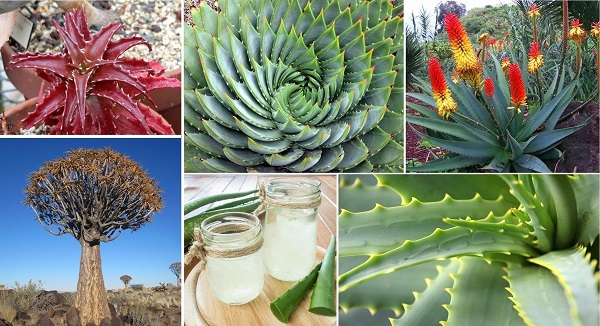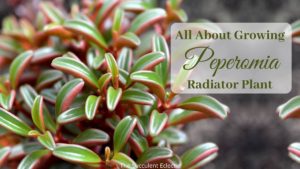Aloe, (AL-oh) With over 500 species and aloe varieties, it is one of the best known in the world of succulents. Aloe vera, the medical marvel, is just one of many types of aloe plants widely available to the home gardener. It is easy to grow, indoors or out, with a handsome, structural appeal. Let’s take a closer look at these fascinating plants and learn about aloe plant care, together!
All About Different Types of Aloe Plants
In this Post We'll Cover:
{Please note, some links in this post may be affiliate links to sites that pay me a small commission if you click on the link and make a purchase. This commission is at absolutely no cost to you. I only recommend products and companies that I have worked with and truly love! ~Kat}
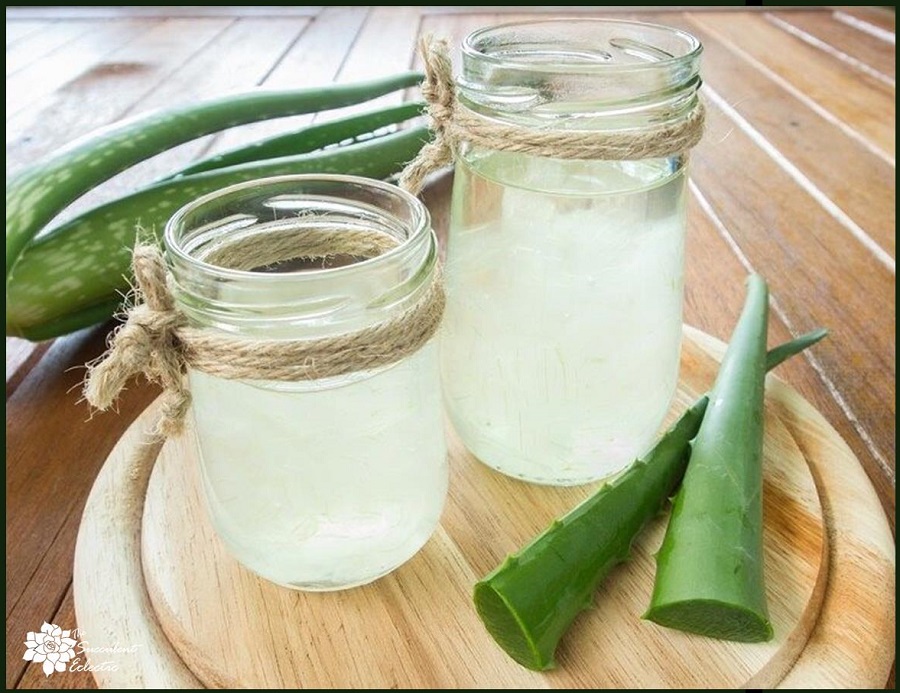
Aloes are native to southern Africa and the Arabian Peninsula, but they have naturalized well throughout much of the world. Aloe vera, or “true aloe”, is the most popular of all aloes, and perhaps of all succulents! Prized throughout history for its many health and beauty benefits, aloe vera was reportedly used by Cleopatra and Nefertiti. The list of the reputed benefits derived from aloe vera is extensive and widely unsupported by science. This is not to say the health care uses of aloe vera are based on myth. There is extensive anecdotal evidence to back them up. Personally, I have used fresh aloe vera to treat burns, rashes and nausea as well as for general skin care and as a healthful, refreshing beverage! But aloe vera cannot be patented, which means there is not a lot of profit in proving the scientific basis for these benefits.
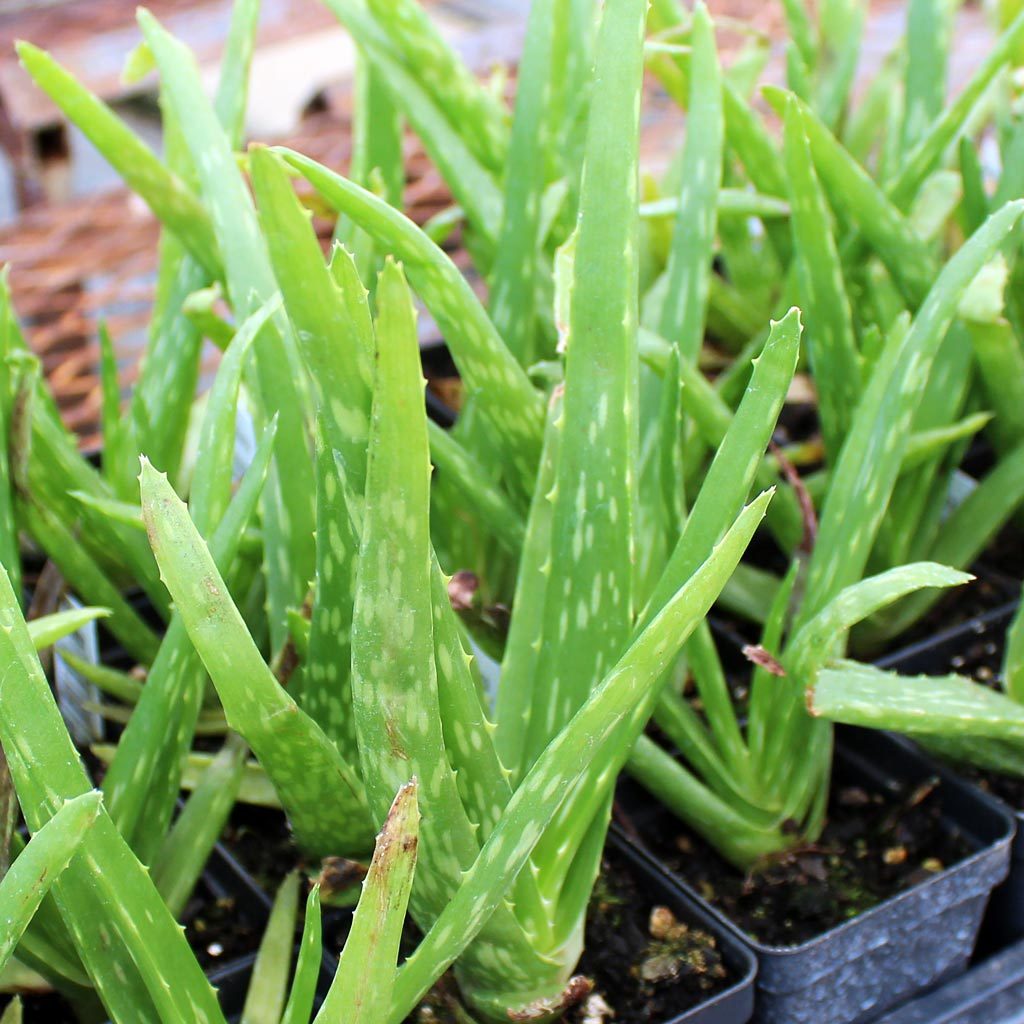
Aloe vera is easy to grow, indoors or out, and truly beneficial to use in many ways. But there is a wide world of aloe varieties to grow, some with health benefits of their own. All are handsome, and structural in their appearance. Let’s take a closer look at some, and then review aloe plant care for all of them.
The aloe vera photo above was shared courtesy of Mountain Crest Gardens, an excellent source for aloe vera plants as well as many other ornamental types of aloe plants.
Many Types of Aloe Plants
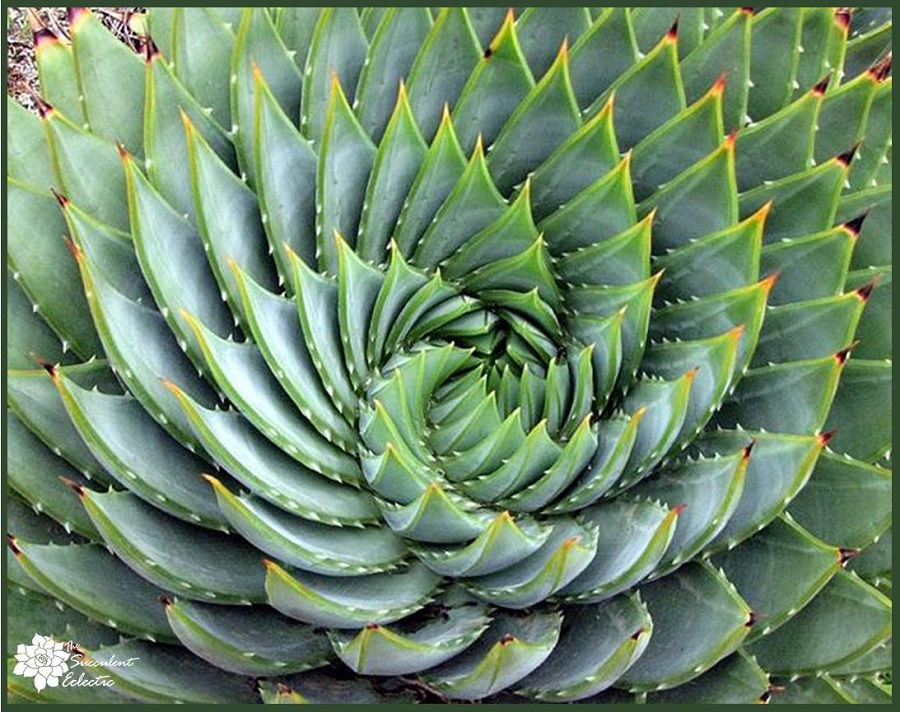
In addition to Aloe vera, there are many types of aloe plants with intriguing forms and colors. In fact, aloes grow from just a few inches tall, up to huge trees of 60-feet or more! Generally, aloe varieties form loose rosettes of greenish leaves, often with somewhat pliable teeth along the edge of the leaves. These teeth lend the plants an edgy appeal without biting like the cactus spines they resemble. Aloe leaves often sport white spots and specks that range from quite subtle, through highly decorative. Some aloe varieties even have these spots forming the dominant color of the plant.
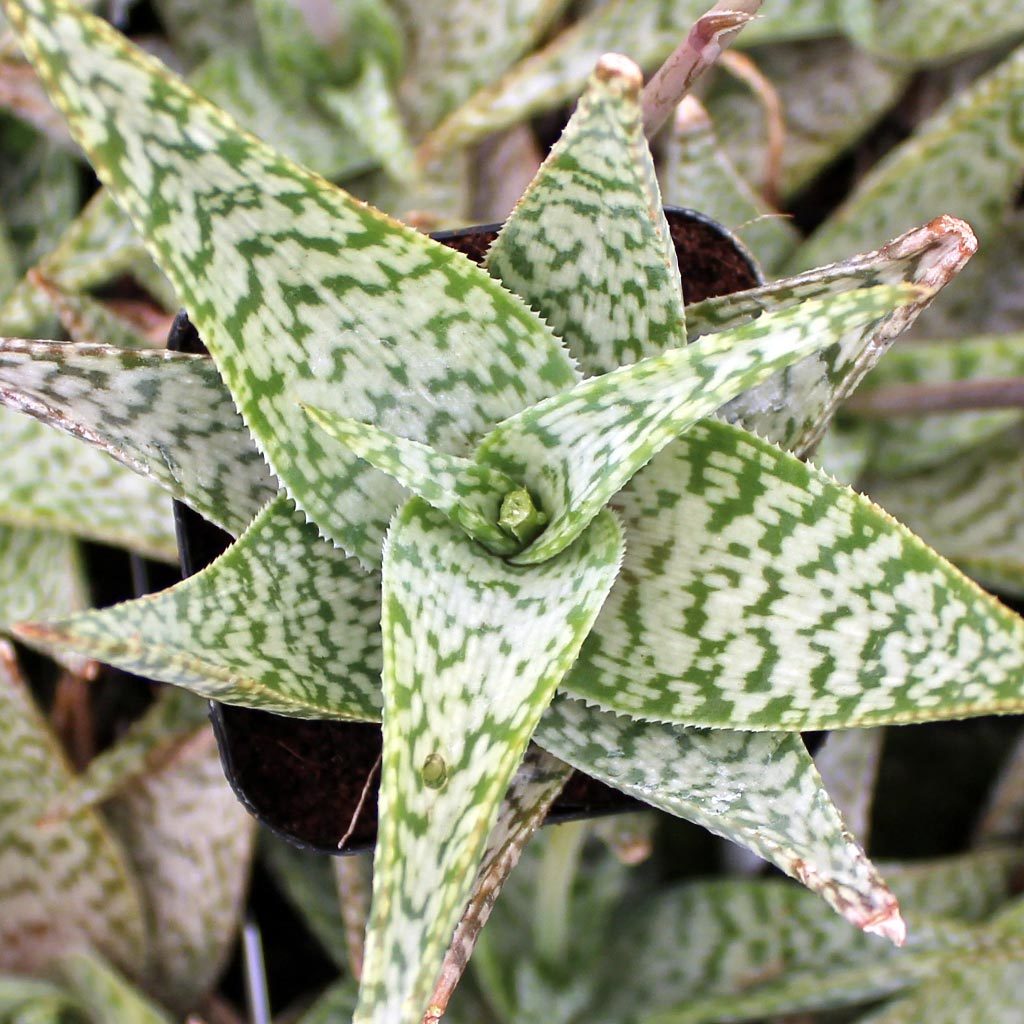
Aloe ‘White Beauty’, shown here, is a highly decorative aloe that grows beautifully indoors in bright light, as well as outdoors in partial sun. This image was provided courtesy of Mountain Crest Gardens. The compact size and attractive appearance make this aloe a perfect choice for inclusion with other mixed succulents. Aloes are especially attractive planted with softer looking succulents such as the flower-like echeveria or crassula. A lovely foil for darker succulent foliage, the white and green leaves frame bright orange blooms come summer.
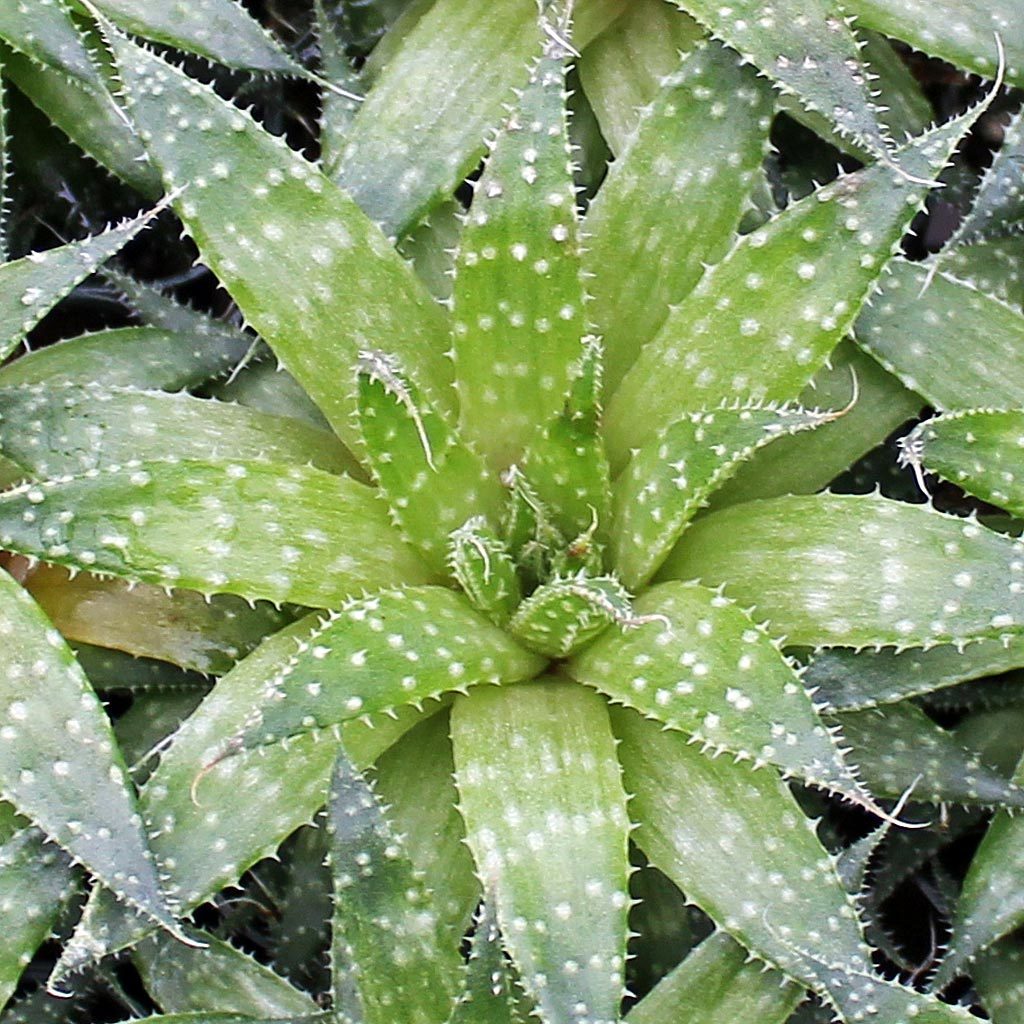
The lovely aloe aristata, or “lace aloe” has a delicate appeal. Light green leaves are festooned with snowy spots and edged with small, white teeth. This charmer is native to mountainous regions of South Africa and can be found growing at 7,500 feet. One of the hardiest of the aloe varieties, arisata will thrive in zones 7B-11, or grow happily indoors. This image was provided courtesy of Mountain Crest Gardens.
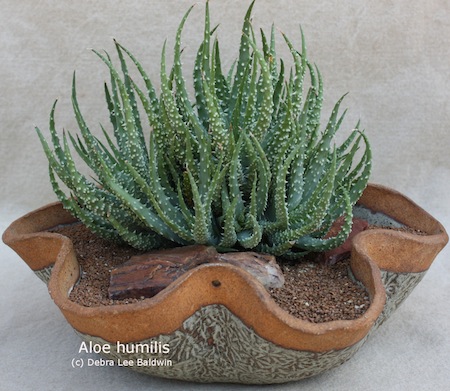
The dense, dark green clusters of aloe humilis have led its common names of spider aloe, or hedgehog aloe. While it does look a lot like a haworthia, and is often confused with them, this is a genuine aloe. Deep green foliage is liberally speckled with white bumps called tubercules. Though toothless, the spiky appearance gives it the edgy appeal of a cactus without the spines. Although different varieties vary widely in appearance, aloe plant care is quite similar across the spectrum.
Flowering Aloes
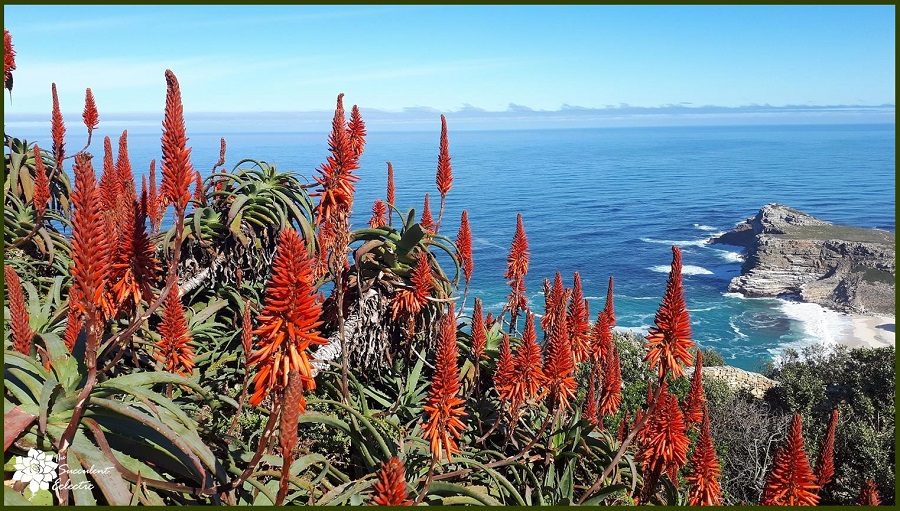
Aloes are among the most spectacular bloomers in all succulent plants. Towering spires are topped by whimsical clusters of electric yellow, orange or red tubular flowers. Genuine hummingbird magnets, these flowers are generally produced in the summer, though well-acclimated aloe plants may bloom at other times of the year, too. For reliable blooms, aloe plants must be fully mature, typically 4-5 years or more, and grown in direct sun. A clump of aloe plants in full bloom will stop visitors to your garden in their tracks.
Aloe Plant Care
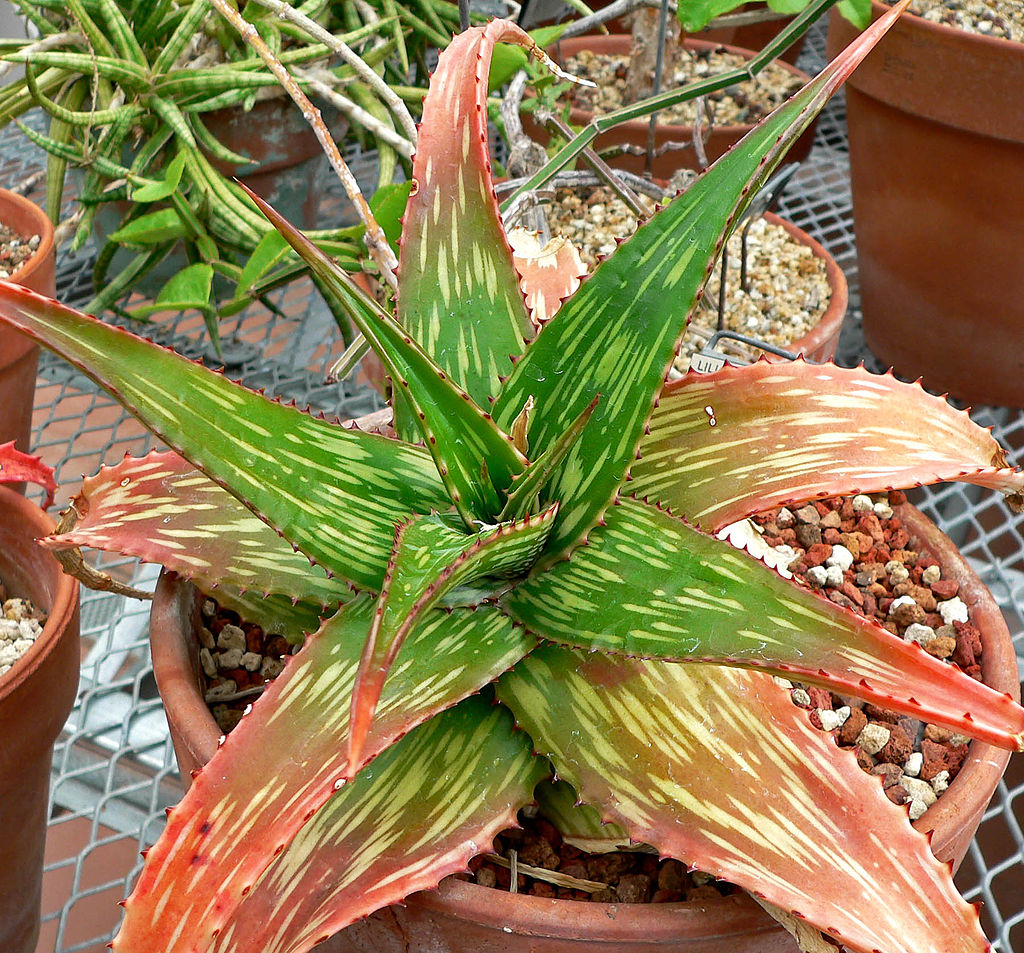
Sun Exposure for Aloe Plants
Most aloes will thrive outdoors in full sun. Yet many easily adapt to the lower lighting found indoors, and are popular succulent houseplants. Provide your indoor aloe plant with a brightly lit location, or supplement the sunshine with artificial lighting. Most varieties that flush a gorgeous color, like Aloe somaliensis shown above, will only do so with direct sun exposure.
Aloe Varieties Hardiness and Growing Zones
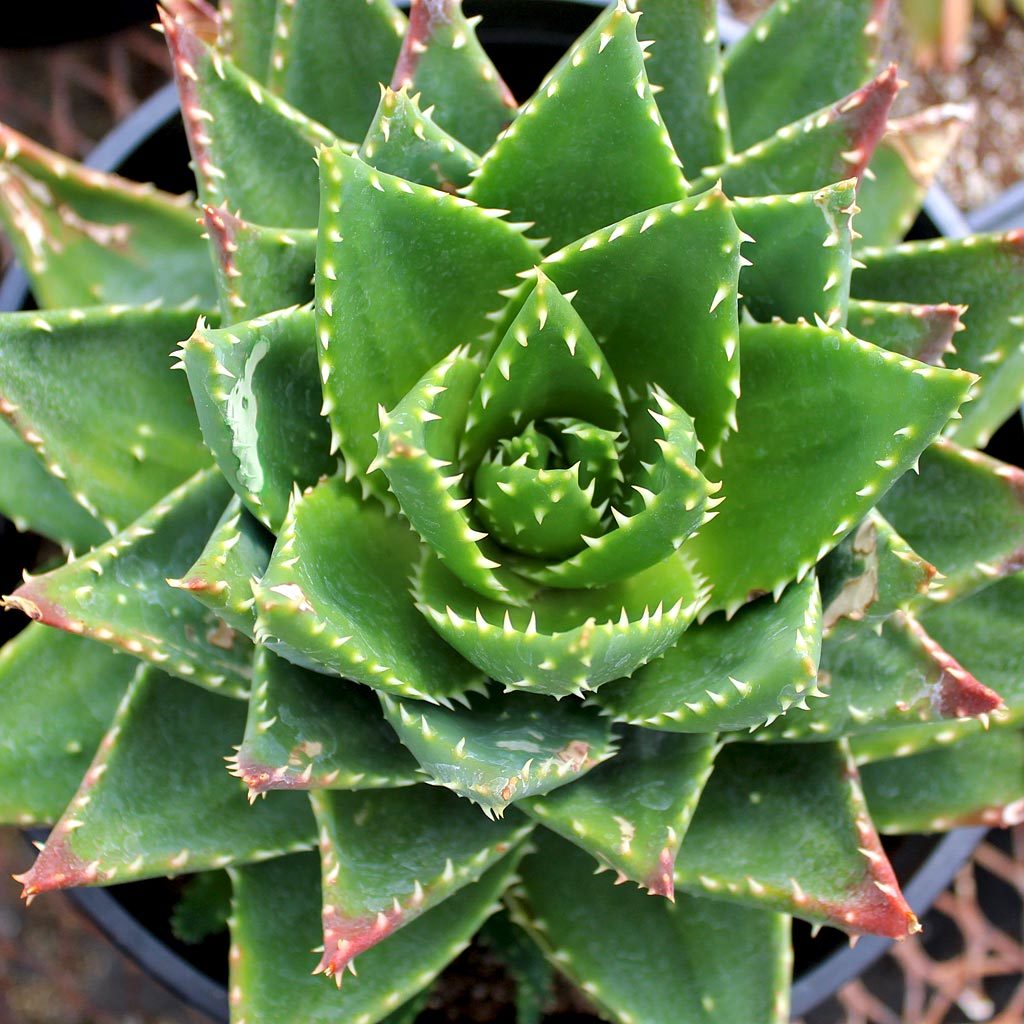
While some types of aloe plants can be grown in a bit more cold, in general, aloes are tender to frost. Unless you are certain of the hardiness rating of your aloe, plan to grow them in the ground outdoors only in zones 9-11. Otherwise, plant them in containers to enable you to over-winter them indoors. Most aloe varieties will happily grow indoors year round, given a good amount of light.
The image above of Aloe nobilis, is shared by of Mountain Crest Gardens.
Watering Aloe Plants
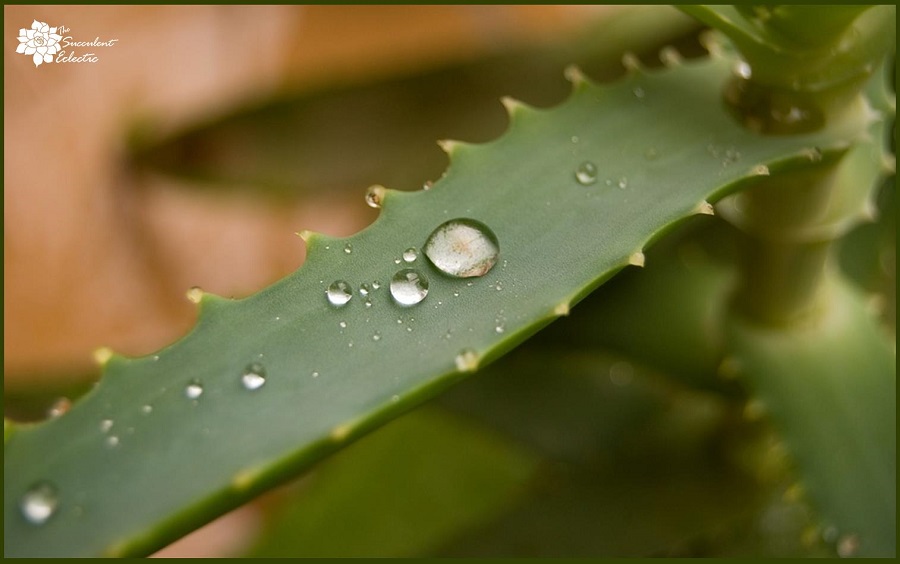
It is important to plant your aloe in a fast draining succulent soil. Water only when the soil is fully dry. Be generous with the water, and let it fully drain. This will ensure your plant’s good health. Proper watering for your succulent plants is critical. Click here to learn in depth about proper watering for succulents.
PropagatingPropagating (PRAH-puh-gate-ing) a plant is to grow another p... Aloes
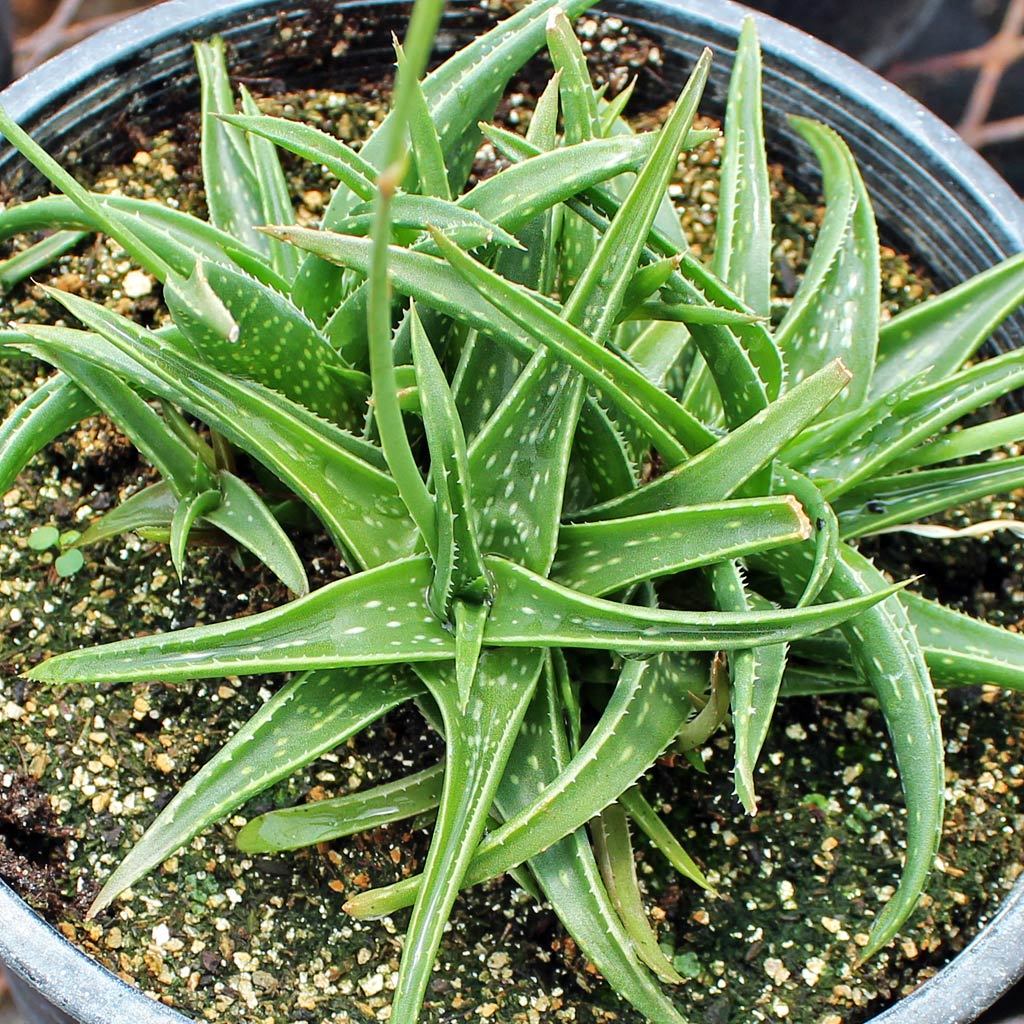
All types of aloe plants form additional plants beside them, even the towering aloe trees. Propagating your aloe plants is very simple. Although you can get an aloe cutting to root, it requires far more precision than most succulents. Instead, simply separate the offsetsSucculent offsets are the baby succulents that form at the b... or “pups” and you will have more plants! Wait for your aloe to look like a cluster of rosettes, rather that a single one. The image of the Aloe firebird above, (provided by Mountain Crest Gardens) is a great illustration of what you want to see. To divide your aloe, dig the entire plant, and bush excess soil away from the roots to better see the form of the plants. What appears to be a single, large plant is actually made up of several, clustered together. Their roots will be entangled, and they may be connected by modified, underground stems, called rhizomesA rhizome (RI-zome) is a modified stem that grows undergroun.... Simply tease apart the roots and slice through the rhizome with a clean, sharp knife.
Replant your aloes in dry soil, but give them 2-3 days to heal other before watering. You now have two aloe plants! 🙂
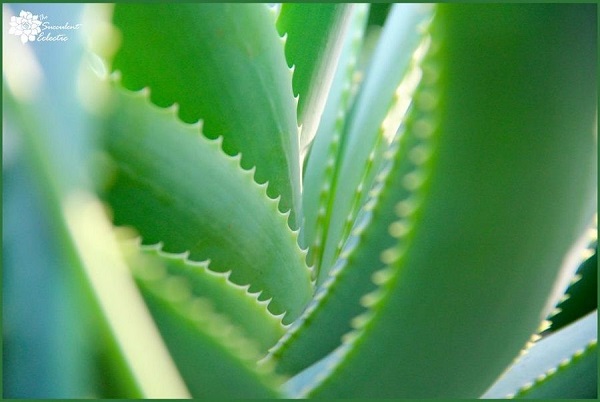
I hope you have enjoyed this review of the many aloes and their care. I’d love it if you would take a moment to leave a comment and let me know, or ask any questions – I am happy to help! If you are looking to grow your first, or to widen your collection, Mountain Crest Gardens offers over 10 aloe varieties and hybrids. I particularly like their aloe selection for houseplants.
‘Til next time…
Happy gardening!

P.S. For my FREE course, 7 Steps to Succulent Success, please subscribe! Thanks so much!

